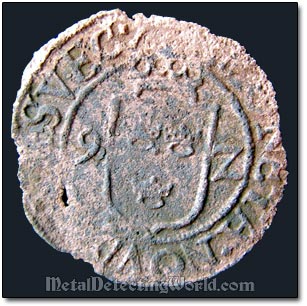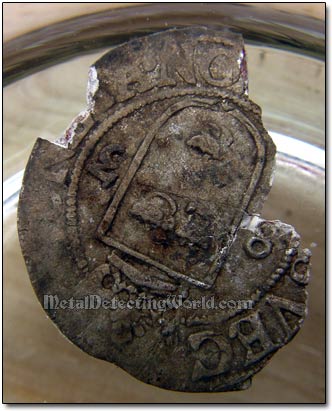How To Clean Silver Coins - Tutorial, page 1
Simple and Quick Method for Cleaning Coins of Silver Content Higher Than 0.203
Preface
This simple method applies to dug silver coins that are not worn out and not of any high value - they are neither key-dated nor extremely rare, and their silver content is higher than 203/1000 (0.203). (Highly valued coins should not be touched at all!) This method is useful when you just want to make your coin finds look presentable, i.e. their designs are well visible, and do it quick so you can take their pictures to be posted in your favorite metal detecting forum or blog on the same day you dug up the coins.
Because silver coins always consist of silver alloys, chemical action occurs on the non-silver alloy constituents; the higher the proportion of these, the more severe the effects. As silver is chiefly alloyed with copper, one may often observe green and brown stains, coatings and incrustations - results of chemical actions on copper constituent, on silver coins, especially on those that have low silver content (below 0.200).
1592 1 Fyrk - Coin of Low Silver Content (0.100), Badly Damaged by Ground Minerals

Such coins require a more delicate approach to their cleaning if it is even possible. Also, sometimes even coins with high silver content may be affected by salts in soil if it is highly mineralized.
If a dug silver coin shows any dirt and encrustation, green or brown stains, and false patina (described here), you should consider using other methods for cleaning silver coins described on this page. Silver itself is tarnished by hydrogen sulfide (gaseous) in the air, or through sulfur in perspiration on the hands, in leather of purses, etc. But the resulting "easy salt" - Silver Tarnish (AgS), is so microscopically thin that the metal is practically not attacked by it.
But there is another salt - silver chloride (AgCl), also known as Horn Silver, which is formed by silver via combination of hydrogen chloride (HCl) in the ground with the metal. Horn silver has a devastating effect on silver coins as it forms a yellowish, gray to brown, and violet coating of varying thickness and is usually bumpy and fissured. Horn silver can be removed using a treatment #16 described here.
In each particular case, you should examine each silver coin closely to decide which method to apply for its cleaning. For this method presentation, I am using a partially damaged thin silver 1583 Half Ore coin hammered during the reign of Swedish King Johan III, and found at the location of a Swedish tavern #6.
This silver coin does not show any bad effects of soil salts and mineralization on its surface. It is only tarnished by the "easy salt" - hydrogen sulfide, which can be easily removed. The coin's silver content is 203/1000
Silver Hammered Coin Before Cleaning

If your dug silver coin of copper-bearing alloy looks similar to the coin shown above, you can go ahead and easily remove silver tarnish off its surface if you carry out the following procedures:
1) Soak Your Silver Coin Before Cleaning
Soaking of the newly dug silver coin is done in warm soapy water. Liquid soap or detergent help loose and lift the dirt off the coin's surface without doing anything to the coin itself.